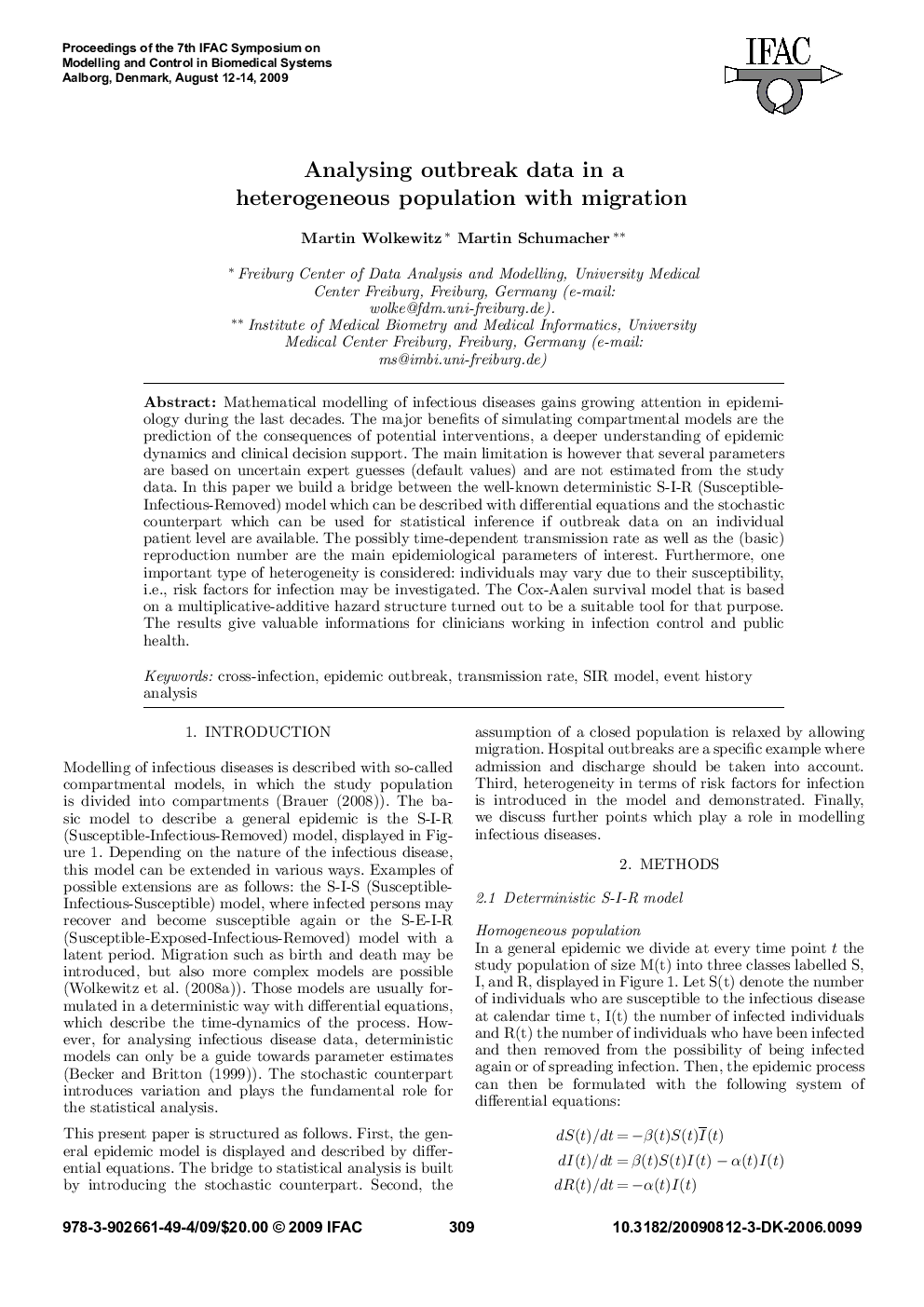| Article ID | Journal | Published Year | Pages | File Type |
|---|---|---|---|---|
| 719479 | IFAC Proceedings Volumes | 2009 | 4 Pages |
Mathematical modelling of infectious diseases gains growing attention in epidemiology during the last decades. The major benefits of simulating compartmental models are the prediction of the consequences of potential interventions, a deeper understanding of epidemic dynamics and clinical decision support. The main limitation is however that several parameters are based on uncertain expert guesses (default values) and are not estimated from the study data. In this paper we build a bridge between the well-known deterministic S-I-R (Susceptible-Infectious-Removed) model which can be described with differential equations and the stochastic counterpart which can be used for statistical inference if outbreak data on an individual patient level are available. The possibly time-dependent transmission rate as well as the (basic) reproduction number are the main epidemiological parameters of interest. Furthermore, one important type of heterogeneity is considered: individuals may vary due to their susceptibility, i.e., risk factors for infection may be investigated. The Cox-Aalen survival model that is based on a multiplicative-additive hazard structure turned out to be a suitable tool for that purpose. The results give valuable informations for clinicians working in infection control and public health.
